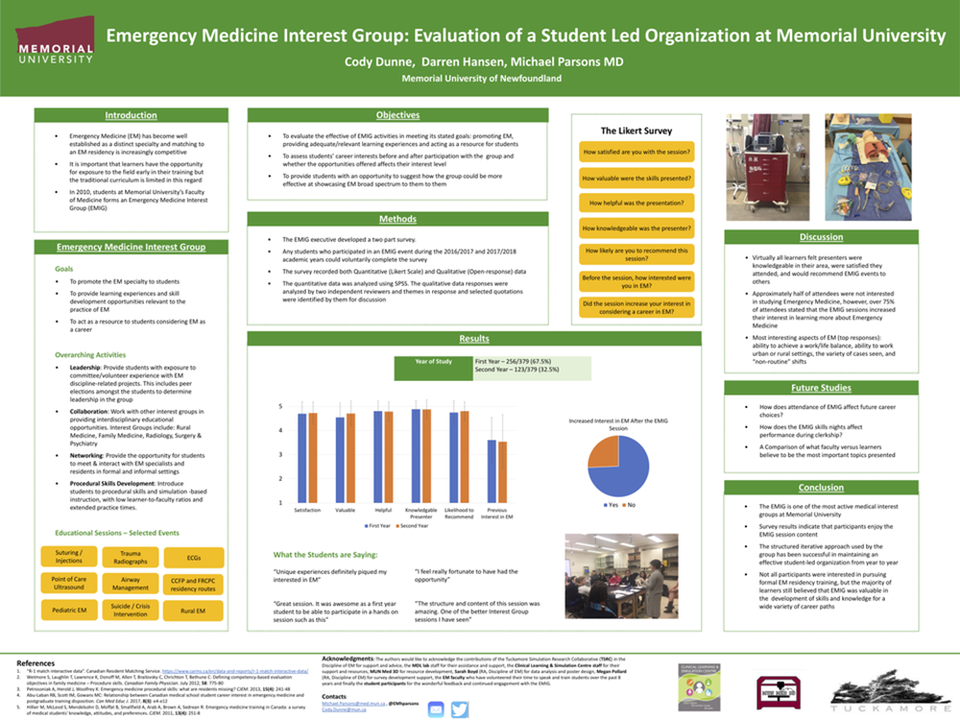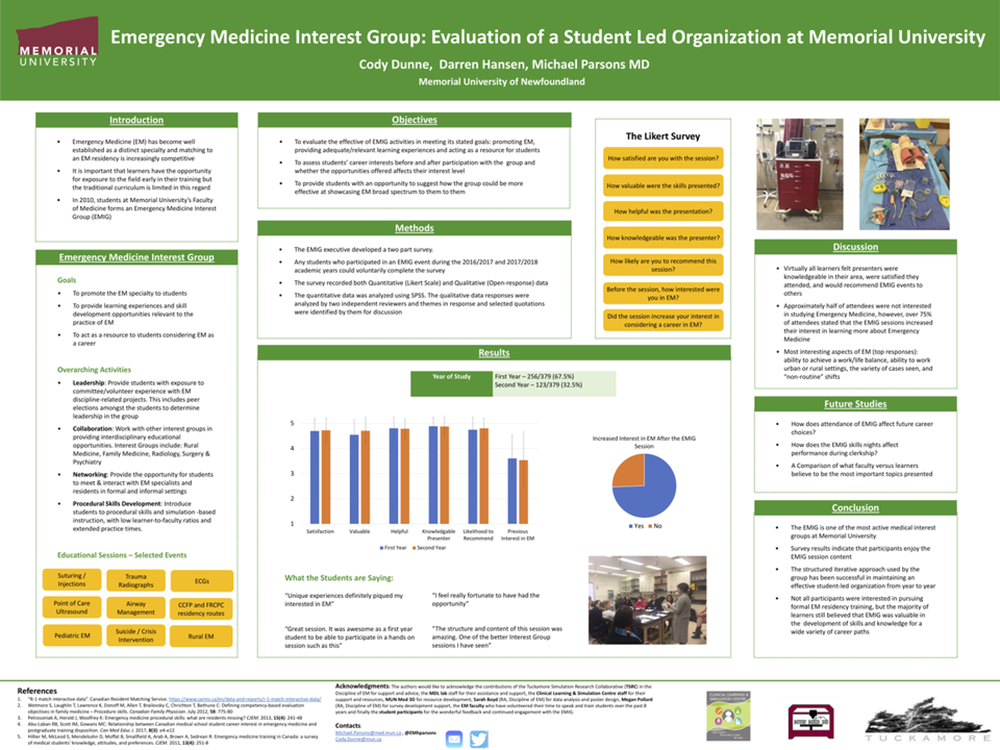Abstract
Innovation: Interest groups have become increasingly popular as students explore potential career paths earlier in their undergraduate experience. Emergency medicine (EM) has grown as a specialty and the match has become quite competitive. Attractive features of EM cited by learners (diversity, procedural skills and flexible schedule) appeal broadly to the undergraduate population. Learners at Memorial University recognized this leadership opportunity and worked with faculty to reach this wide target audience through a streamlined iterative evaluation of their EM Interest Group (EMIG).
Methods and results: The local EMIG was formed in 2010. Yearly, EMIG executive work with outgoing members using prior experiences, contacts and best practices to facilitate handover and progress. From 2015 to present, 379 surveys were collected, giving an 81.9% response rate. 67.5% of respondents were first year students, and 32.5% were second year. The survey consisted of Likert scale and open-response questions. The Likert scale questions yielded favorable responses. 377 students (99.6%) felt presenters were knowledgeable, 374 (98.6%) would recommend the sessions to others and 374 (98.6%) were satisfied they attended. Surprisingly, 165 students (43.6%) said they were not interested in Emergency Medicine, likely attending due to the appeal of session topics and transferrable of EM skills. 288 (76.0%) stated that attendance did increase their interest in EM. Top responses for aspects of EM most interesting to them included: ability to find a work/life balance, ability to work urban or rural, variety of cases seen, and the "non-routine" shifts.
Discussion: Survey feedback is used to inform refinement of the content, delivery and format of EMIG activities, delivered by EM faculty. Hands-on sessions (eg. suturing & airway management) have been popular. Informational sessions, on specific medical topics (eg. ECG, resuscitation cases) or broader topics (EM streams) have also been very well received. Inclusion of all interested students, particularly large numbers for hands-on sessions, has presented challenges. Beyond current survey results, it will be interesting to consider if EMIG participation translates to learning or behavioral changes relevant to later clinical encounters; a question that will be difficult to quantify.
Conclusion: The EM interest group is one of the most active at Memorial University. Survey results indicate that participants enjoy the EMIG session content and the structured iterative approach used by the group has been successful in maintaining an effective student led organization.






